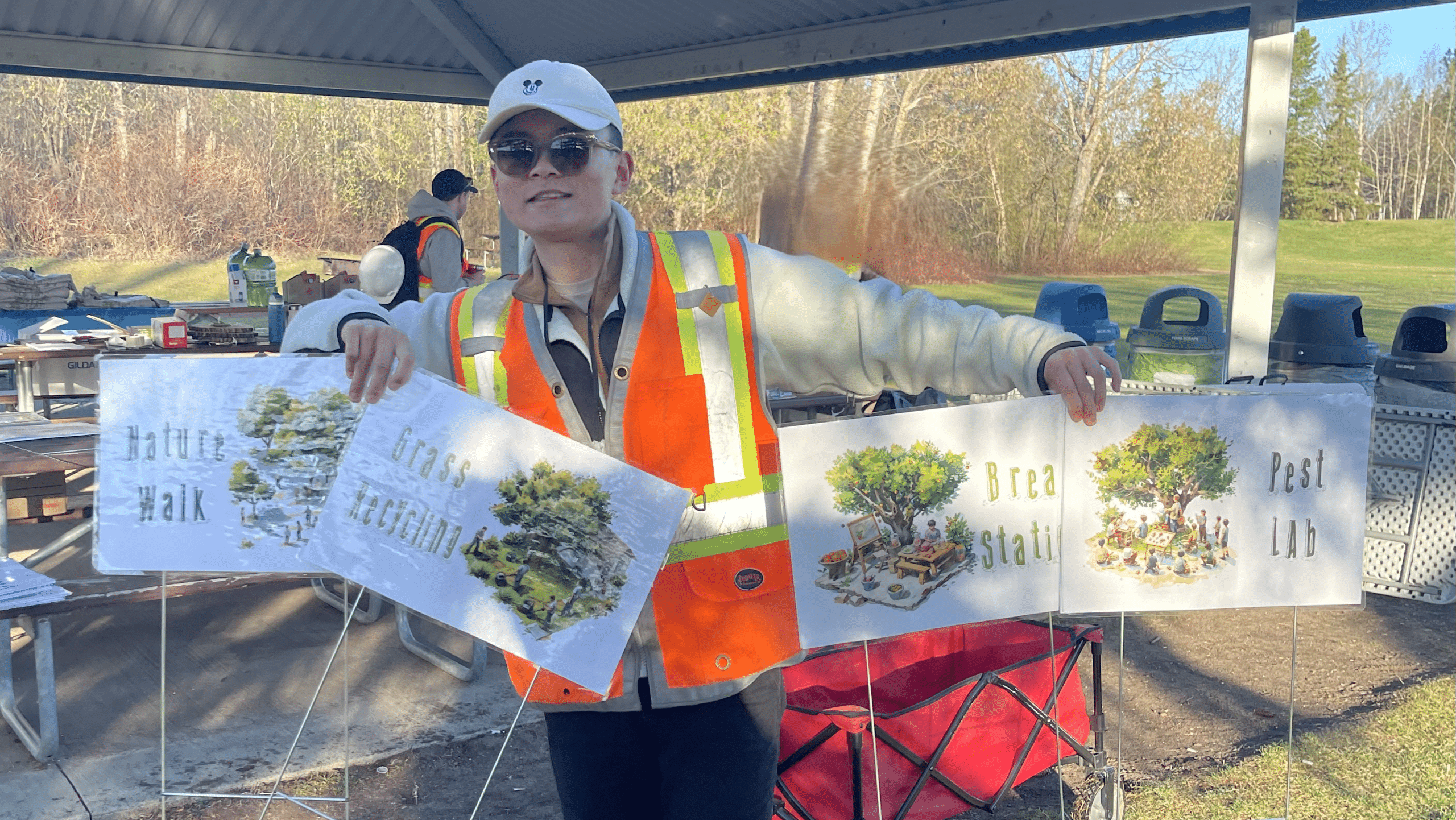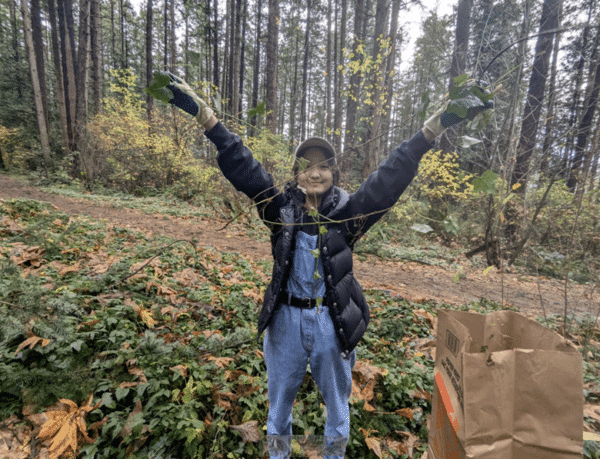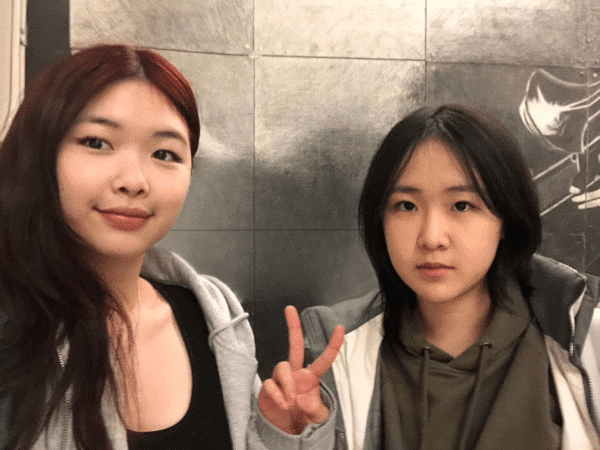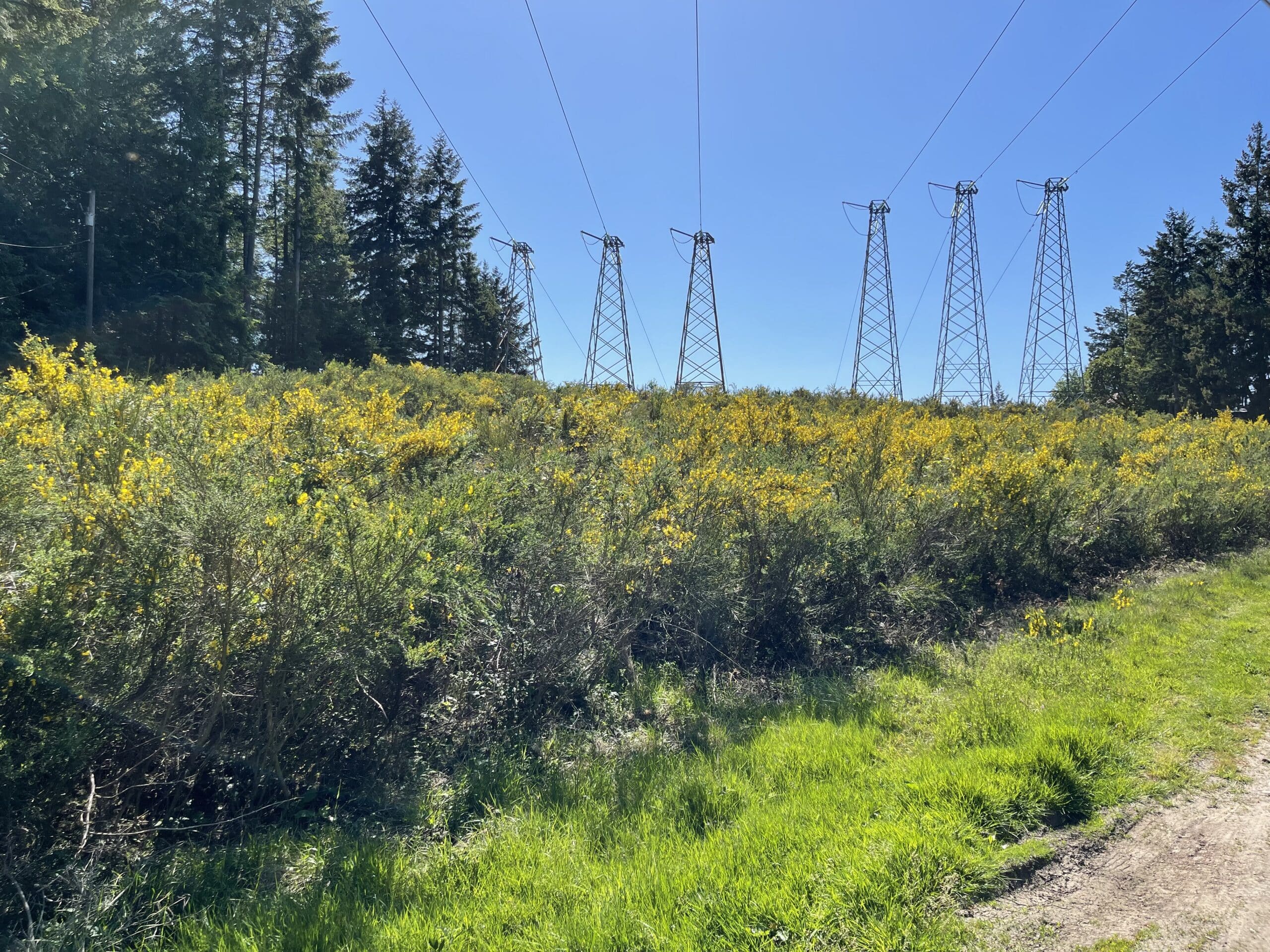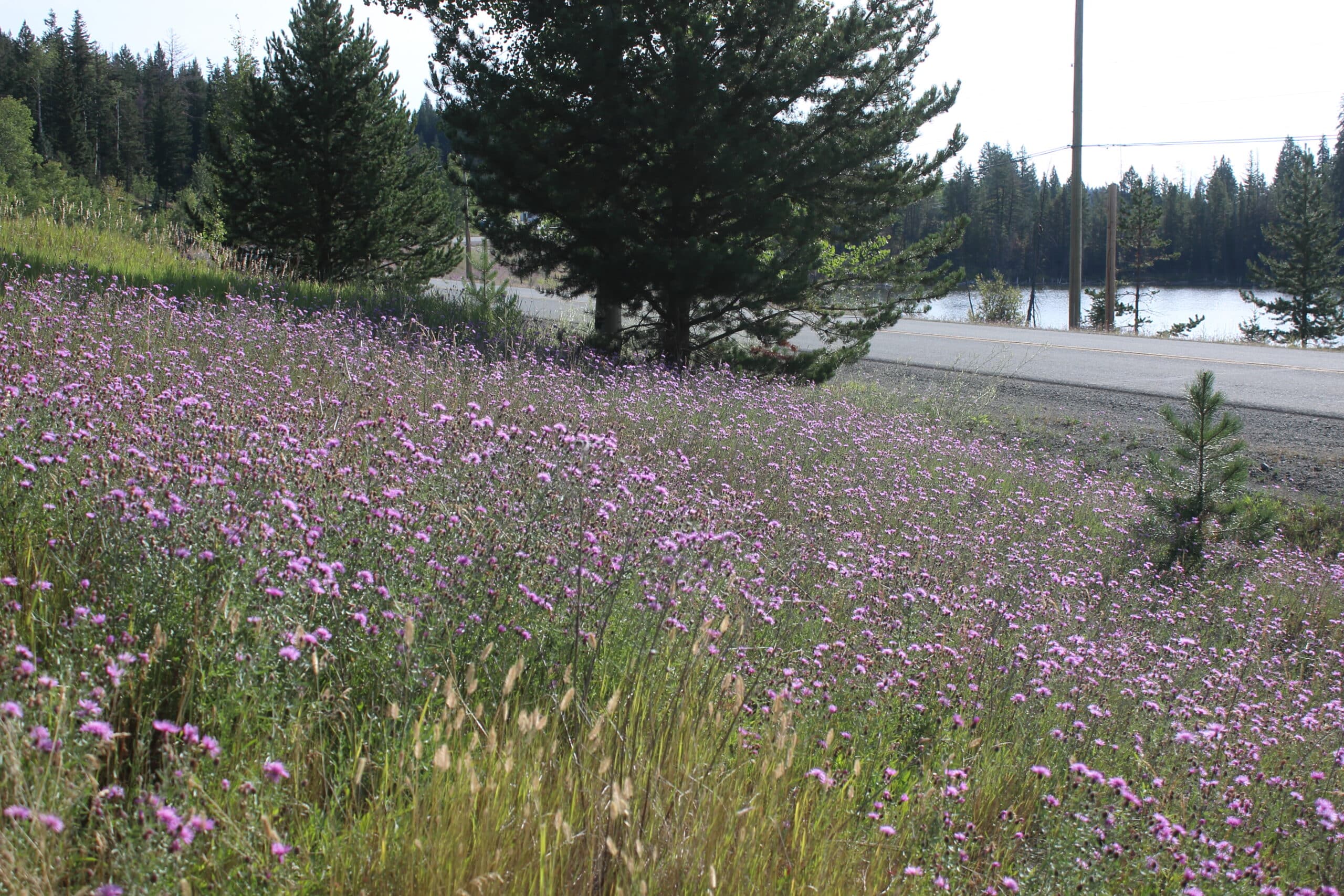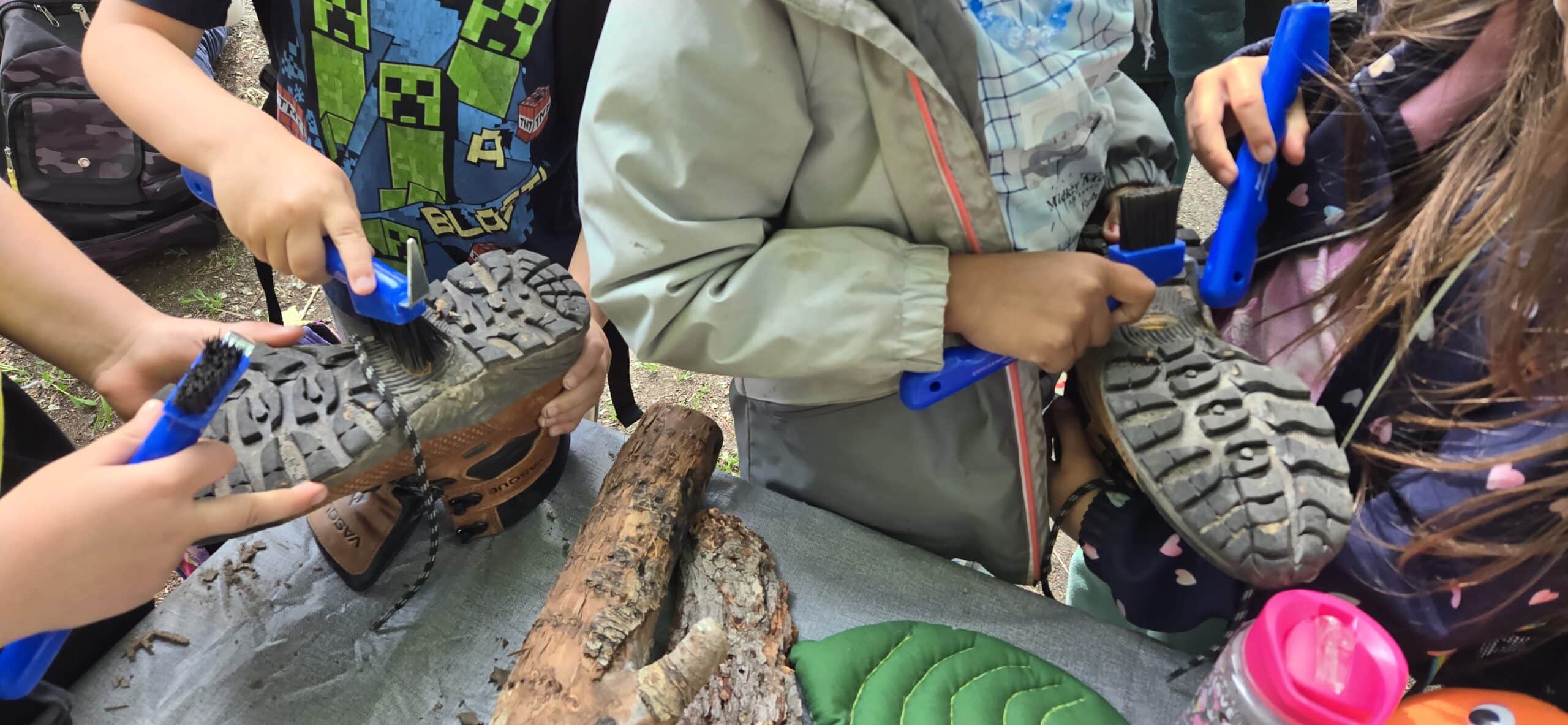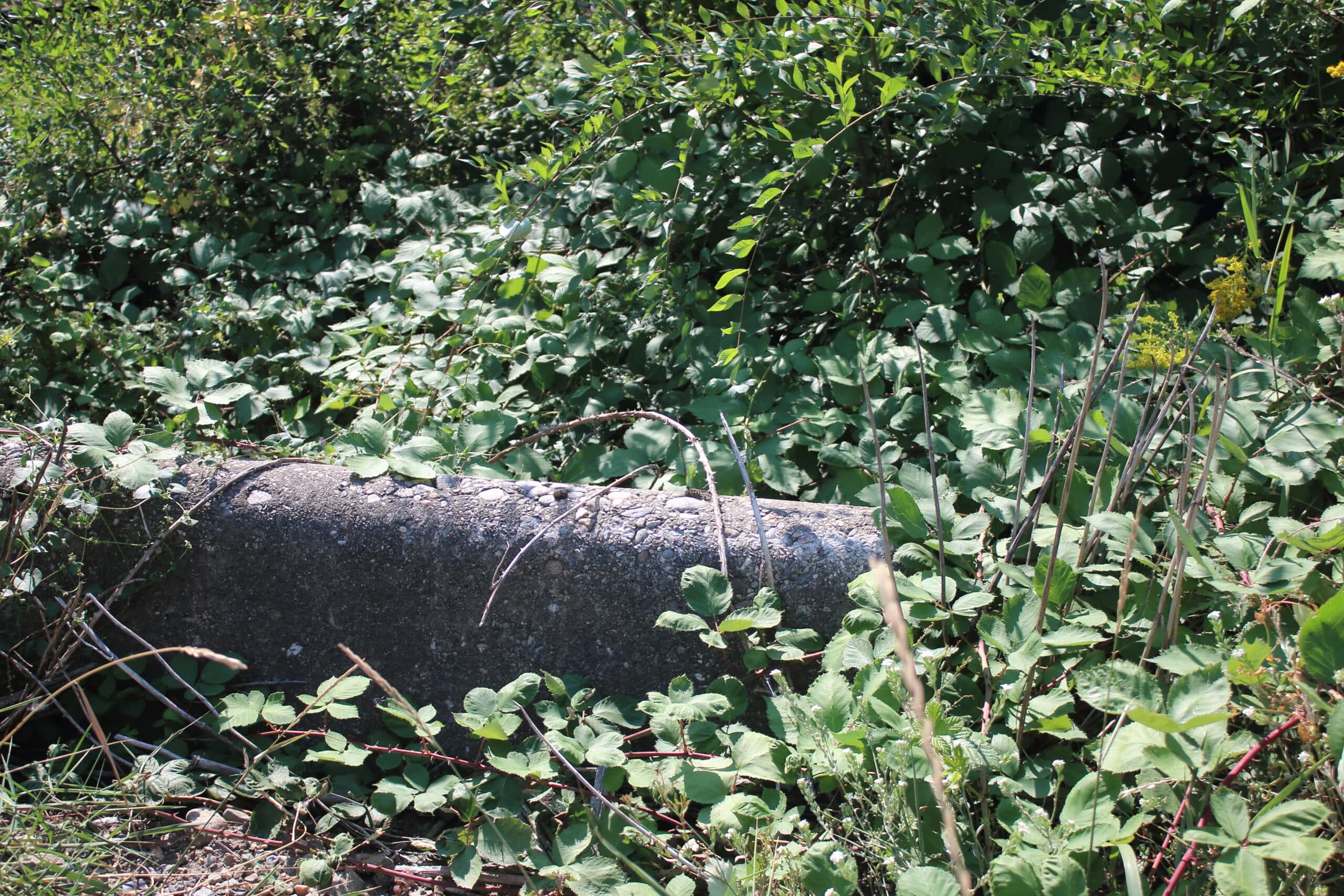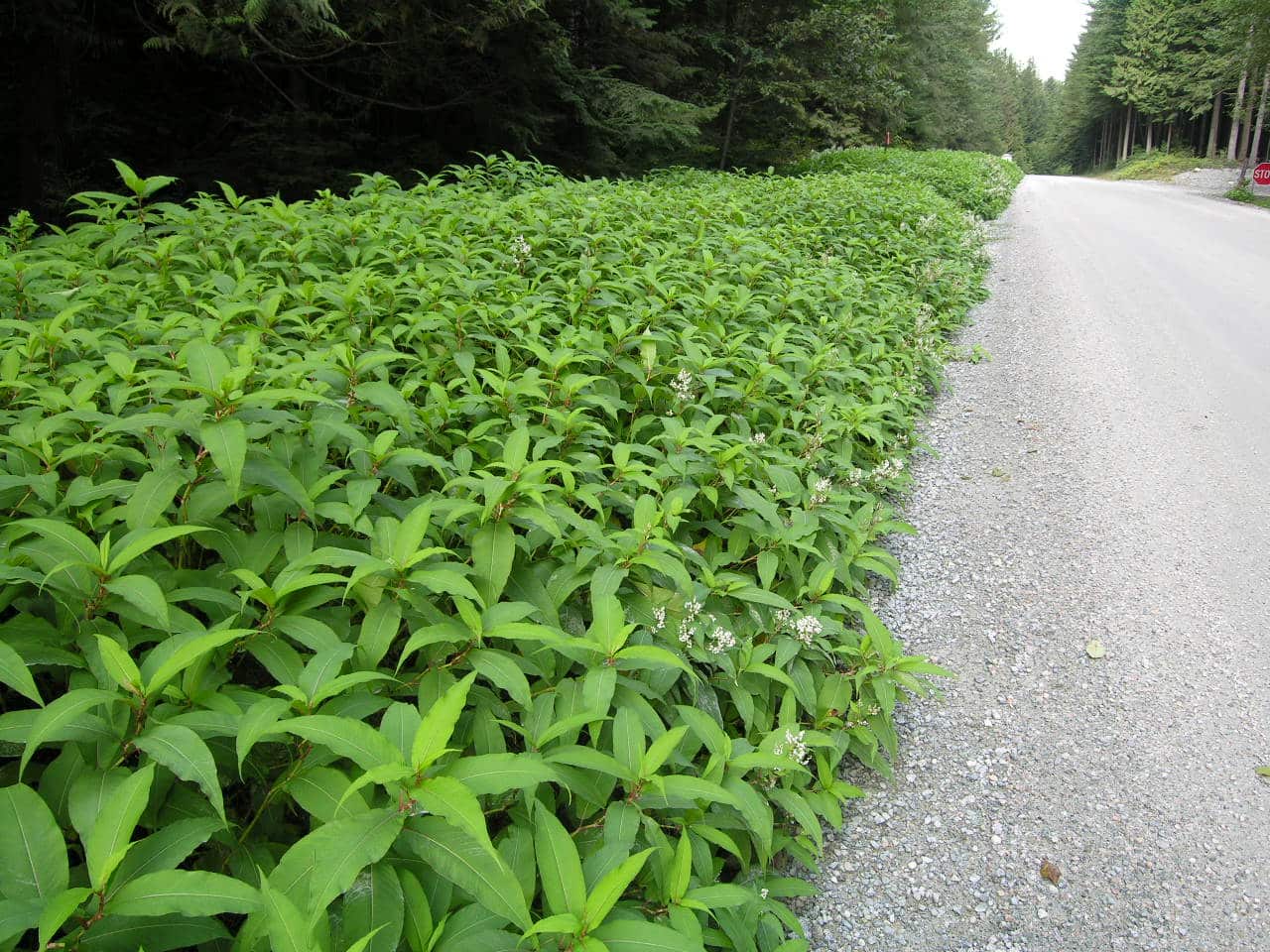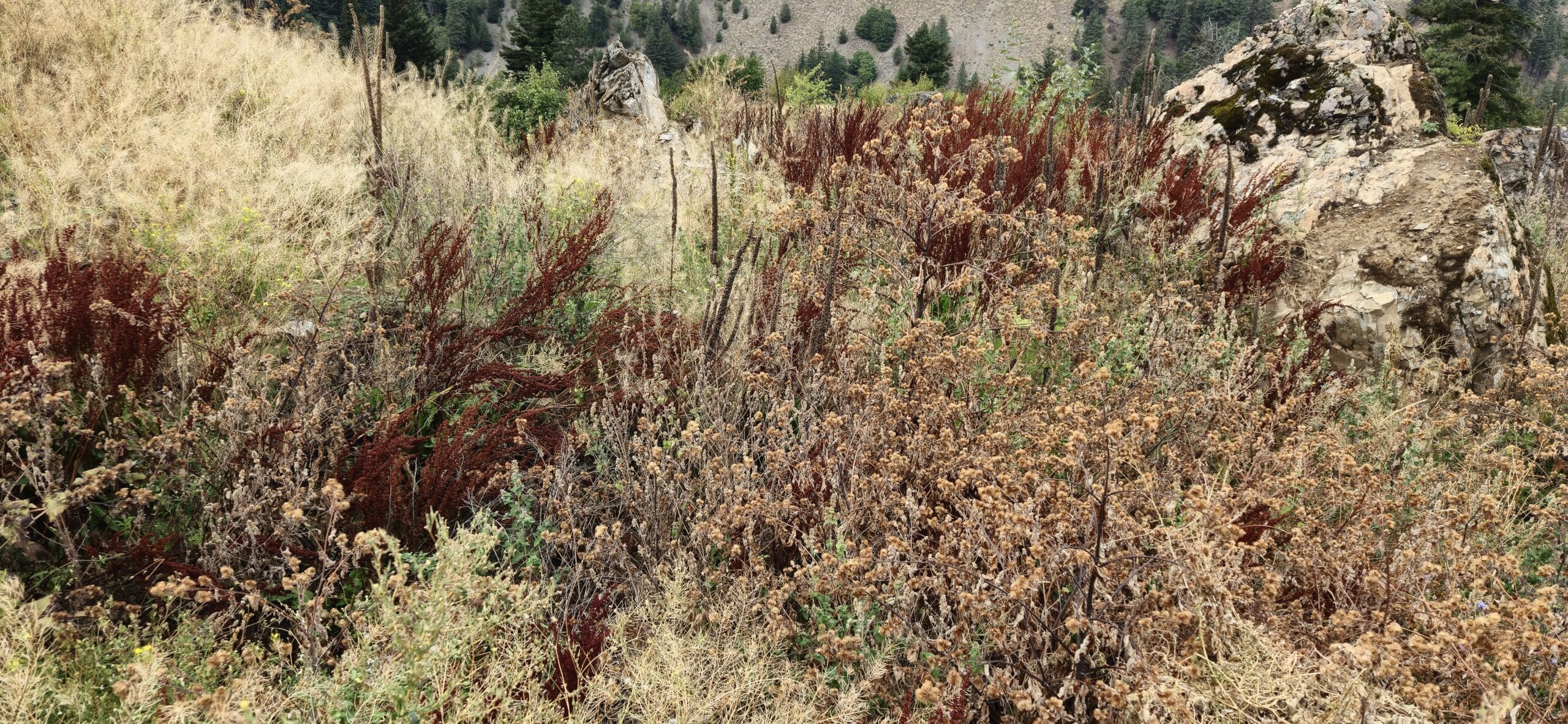By Melanie Apps | June 21, 2024
ISCBC youth program’s invasive species storytelling project continues with its next installment! Our next youth story features Han Yan, a 2023 UBC graduate from the Urban Forestry program.
Han has spent many hours tackling invasive species in Vancouver, and currently works as a Landscape Technician helping to maintain the City of Edmonton’s public tree inventory. Not only is Han heavily involved with environmental initiatives, he is also an excellent dancer! Enthusiastic and passionate about nature and dance – Han feels both are symbols of freedom and enjoyment, and he gains inspiration for his dance movements from nature.
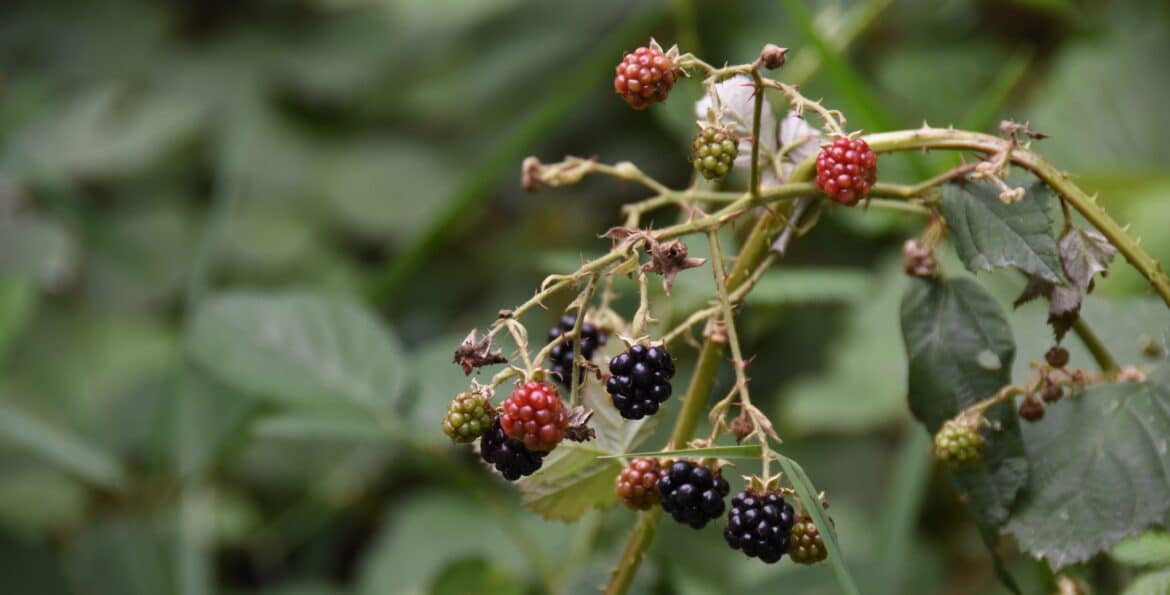
Han feels most connected to himalayan blackberry (Rubus armeniacus), the invasive plant which was most challenging to remove while volunteering in Vancouver. Not only did their prickly stems wear out a few of his gloves, he feels their sheer abundance weakens environmental resilience and reduces the aesthetic value of natural views.
His involvement with invasive species began during his second year at UBC, gaining hands-on experience with the Pacific Spirit Park Society. He participated in many of their environmental stewardship programs, such as invasive species removal, bog water quality monitoring, and Indigenous garden recovery.
Aside from himalayan blackberry, Han recalls a specific encounter with another invasive species that left a lasting impact on him. “During my travels around Toronto, I saw many local elm trees devastated by Dutch Elm Disease (DED), which is spread by elm bark beetles. It was astonishing to witness elm trees several stories high being cut down along entire streets. Luckily, Edmonton has the largest DED-free elm stand in North America. However, if DED ever comes to Edmonton, it could wipe out 20% of the city’s tree canopy, so we need to be prepared for that.”
Han has the following advice for those who want to get involved with invasive species management: “When it comes to environmental management, the key thing to remember is to be proactive. As the local climate is changing, many irregular activities might occur. For example, beetle eggs might survive warmer winters, potentially increasing invasive species numbers the following year. The management plan we are using now might quickly become outdated due to dynamic climate conditions. Nothing is set in stone, so we need to be proactive rather than reactive.”
When managing invasive species, the most challenging part for Han is controlling them in a timely manner. “Generally speaking, by the time you notice the presence of invasive species, they may already have spread to such an extent that the chances of reducing their numbers is slim. I haven’t figured out a way to overcome this challenge – researching this could be a direction of interest to me in the future.”
Han feels there are many benefits to spending time in nature, and helping with invasive species management might be just what the doctor ordered. “Spending time in nature is wonderful in every sense. I have noticed that some doctors are now prescribing park time to improve mental health. Joining various nature volunteer sessions might help ease anxiety and make you feel more relaxed.”

Funded by the Government of Canada.
Financé par le gouvernement du Canada.
Melanie is a Youth Coordinator for the Lower Mainland region with ISCBC. She is passionate about community-focused environmental stewardship and helps lead a restoration project in New Westminster in her free time. You can reach Melanie at mapps@bcinvasives.ca
Share


